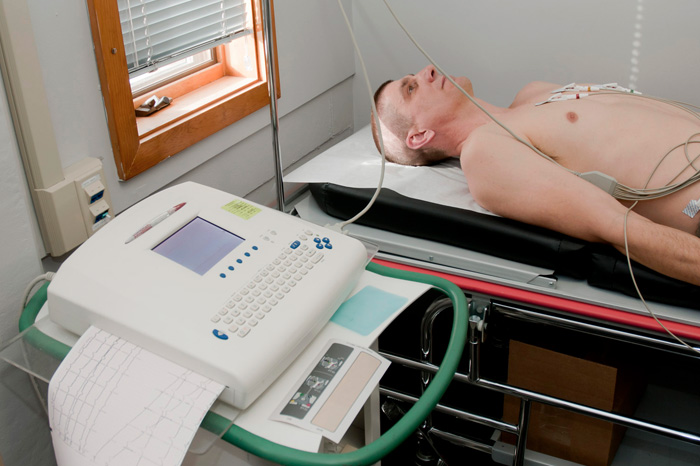An echocardiogram (echo) is a test that uses
high frequency sound waves (ultrasound) to make pictures of your heart.
The test is also called echocardiography or diagnostic cardiac
ultrasound.
Quick facts
- An echo uses sound waves to create
pictures of your heart’s chambers, valves, walls and the blood vessels
(aorta, arteries, veins) attached to your heart.
- A probe called a transducer is passed over your chest. The
probe produces sound waves that bounce off your heart and “echo” back to
the probe. These waves are changed into pictures viewed on a video
monitor.
- An echo can’t harm you.
Why do people need an echo test?
Your doctor may use an echo test to look at
your heart’s structure and check how well your heart functions. The test
helps your doctor find out:
- The size and shape of your heart, and the size, thickness and movement of your heart’s walls.
- How your heart moves.
- The heart’s pumping strength.
- If the heart valves are working correctly.
- If blood is leaking backwards through your heart valves (regurgitation).
- If the heart valves are too narrow (stenosis).
- If there is a tumor or infectious growth around your heart valves.
The test also will help your doctor find out if there are:
- Problems with the outer lining of your heart (the pericardium).
- Problems with the large blood vessels that enter and leave the heart.
- Blood clots in the chambers of your heart.
- Abnormal holes between the chambers of the heart.
What are the risks?
- An echo can’t harm you.
- An echo doesn’t hurt and has no side effects.
How do I prepare for the echo?
You don’t have to do anything special. You can eat and drink before the test like you usually would.
“While I was lying on my side, the technician asked me to move a little
as he moved the wand around my chest. It was really easy and didn’t hurt
a bit!” Mike, age 52
What happens during the echo?
Echo tests are done by specially trained
technicians. You may have your test done in your doctor’s office, an
emergency room, an operating room, a hospital clinic or a hospital room.
The test takes about an hour.
- You lie on a
table and a technician places small metal disks (electrodes) on your
chest. The disks have wires that hook to an electrocardiograph machine.
An electrocardiogram (ECG or EKG) keeps track of your heartbeat during
your test.
- The room is dark so your technician can better see the video monitor.
- Your technician puts gel on your chest to help sound waves pass through your skin.
- Your technician may ask you to move or hold your breath briefly to get better pictures.
- The probe
(transducer) is passed across your chest. The probe produces sound waves
that bounce off your heart and “echo” back to the probe.
- The sound waves are
change into pictures and displayed on a video monitor. The pictures on
the video monitor are recorded so your doctor can look at them later.

